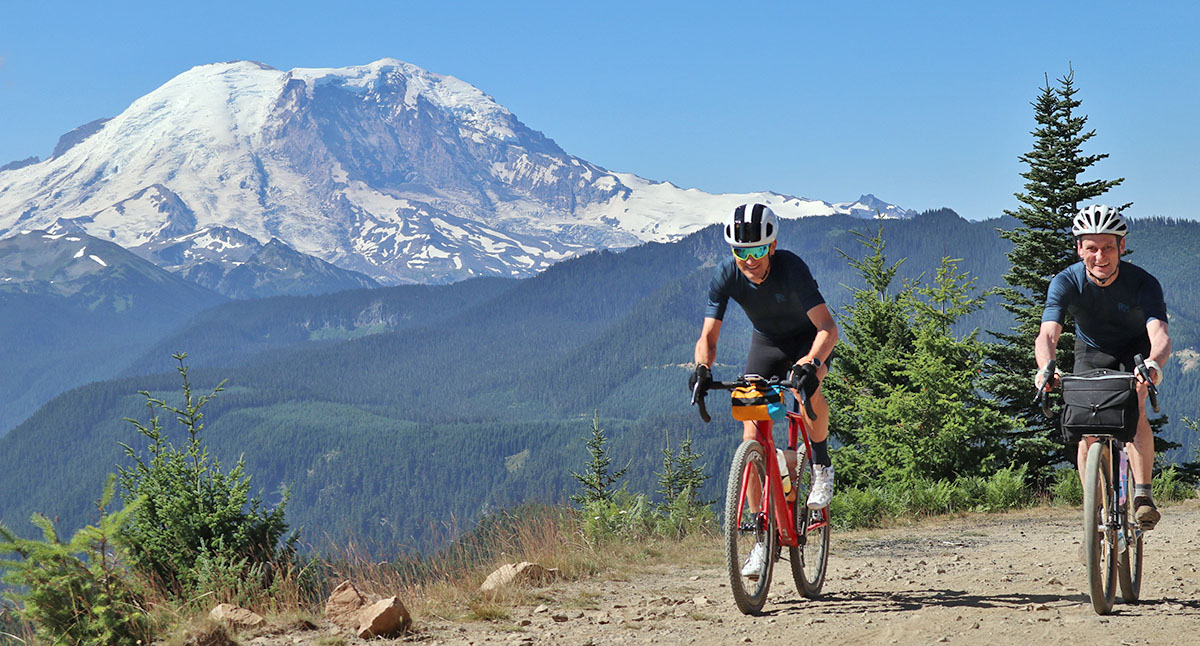20 Years of BQ: New Words for New Bikes
With the current edition, Bicycle Quartery is celebrating its 20th anniversary. It’s been fun to look back at how much cycling and bicycles have changed over those two decades. A sign of how profound those changes have been, and how much BQ has influenced them, are new words that we created to describe new ideas in cycling—words that since have become mainstream.
To put this into context, we have to remember how bleak the cycling landscape was 20 years ago. Racing bikes were everywhere, with huge gears, skinny tires and garish logos. Mountain bikes had given up their original promise of go-anywhere fun; they had become specialized tools for extreme terrain. Touring bikes were not at all intended for spirited riding. The time was ripe to reinvent cycling with a healthy dose of adventure and fun.
When we started exploring gravel roads over long-forgotten mountain passes in the Cascade Mountains and beyond, we found that existing bike categories weren’t optimal for the riding we envisioned. We wanted bikes for riding long distances at a spirited pace, on pavement and gravel, comfortably and with 100% reliability. It was a collaborative effort to redefine what bicycles can do, and many keen cyclists contributed to this process. Along the way, we realized that new ideas needed new words. Here are the stories behind a few terms that are now commonplace in the cycling world:
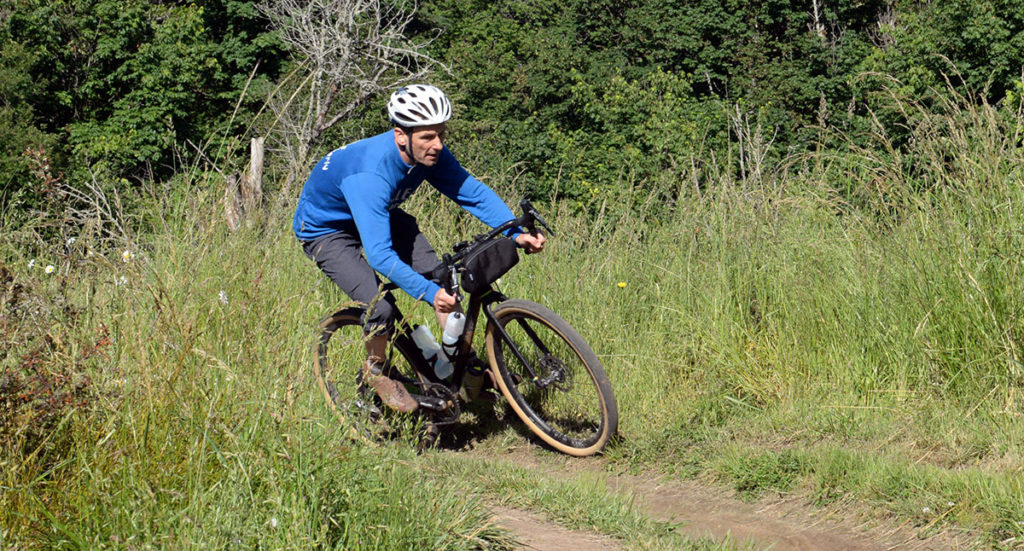
All-Road Bike
In 2006, our first tire tests revolutionized our understanding of how bicycles work. What we found was totally unexpected: On real roads, higher pressures don’t make tires faster. Back then, that was the total opposite of what everybody—ourselves included—had believed. The implications were huge: If high pressure wasn’t needed for performance, wide tires could conceivably roll as fast as narrow ones. And that meant that performance bikes didn’t need to be limited to narrow tires.
And so we envisioned new road bikes that would be fast and fun on any road: paved, gravel, cobblestones, even occasional singletrack. My friend Chris Kostman remarked: “That type of bike needs a name to catch on.” He was right, of course. It didn’t take long to come up with a name for a road bike that could go on all roads, and not just smooth pavement: Allroad bike. (Still capitalized and without a hyphen.) We explained our idea in the Bicycle Quarterly 17 (Autumn 2006):
“a new breed of ‘Allroad’ bikes: road bikes with wide tires that ride as fast as racing bikes on paved roads, and faster than cyclocross or mountain bikes on unpaved roads, while offering more fun and better comfort on all surfaces. With these bikes, cyclists are free to explore the less-traveled, but often poorly maintained, roads that are just beyond the reach of current ‘road’ bikes.”
It took a decade for the term to catch on. These days, all-road bikes are an established category in the cycling world. How is an all-road bike different from an adventure or mostercross bike? In our definition, all-road bikes should have road cranks with a narrow Q factor and a road-oriented riding position. Of course, that’s just what we think—nobody knows where the bike industry will go with this idea in the future. We’re fine with that. After all, nobody asks Gary Fisher, who coined the term ‘mountain bike,’ what a modern mtb should look like! What’s important is simply this: All-road bikes are fast, versatile and fun.
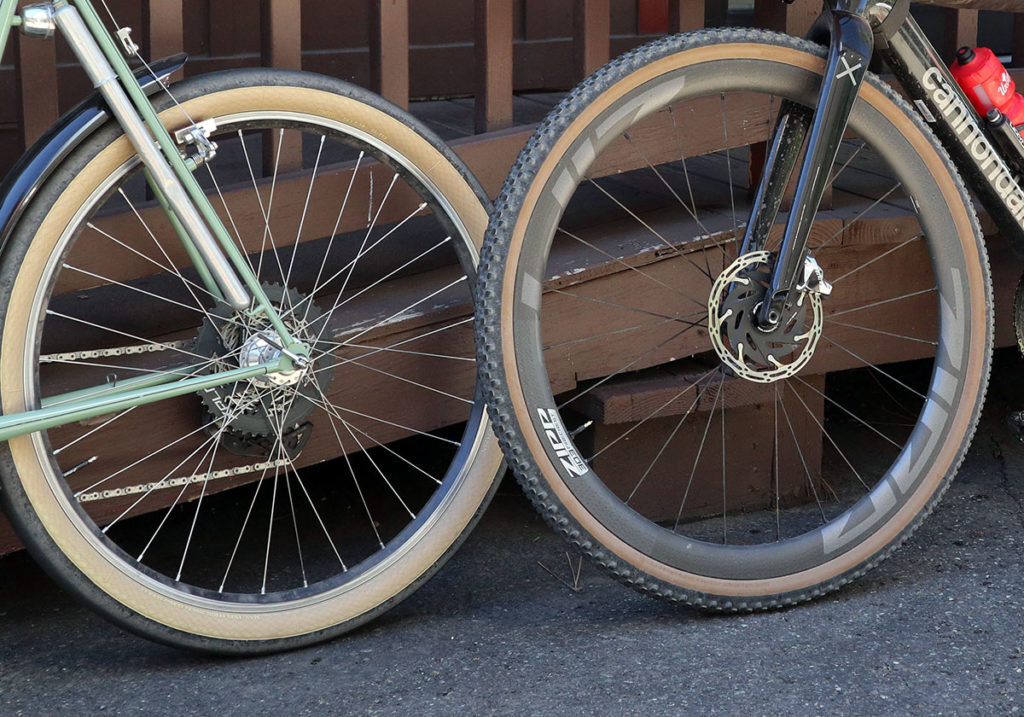
Supple Tires
Researching tire performance on real roads, with a rider on the bike, changed our understanding of tire performance. At the time, lab tests suggested that harder tread rubber compounds would improve performance. On the road, it’s actually the casing that matters the most. Casings that flex without absorbing much energy are the key ingredient for a fast tire. (In fact, some of the ‘magic’ tread rubbers that test so well in the lab are actually slower in the real world, but that is a topic for another post.)
Back then, wide high-performance tires simply didn’t exist, and there was no word to describe the qualities that make tire casings fast—at least in English. Mid-century French randonneurs had told me about their wide, hand-made clinchers that “looked slow, but rolled incredibly fast.” Ernest Csuka of Cycles Alex Singer explained: “You don’t want tires that are just ‘mou’ [soft, limp]. Those are not fast. To roll well, a tire has to be ‘souple.'”
In Bicycle Quarterly 10 (Winter 2004), we mentioned this idea in an article discussing tire choice: “High-quality tires with supple sidewalls provide less rolling resistance.” For a while, we were the only ones talking about supple tires. BQ readers sometimes joked how many times ‘supple tire’ was found in every edition of the magazine. These days, the term is everywhere. Our friends from the popular YouTube channel Path Less Pedaled even coined the term ‘supple life’ to describe their approach to cycling. It’s all good, because nothing adds more fun (and speed) to cycling than a set of supple tires.
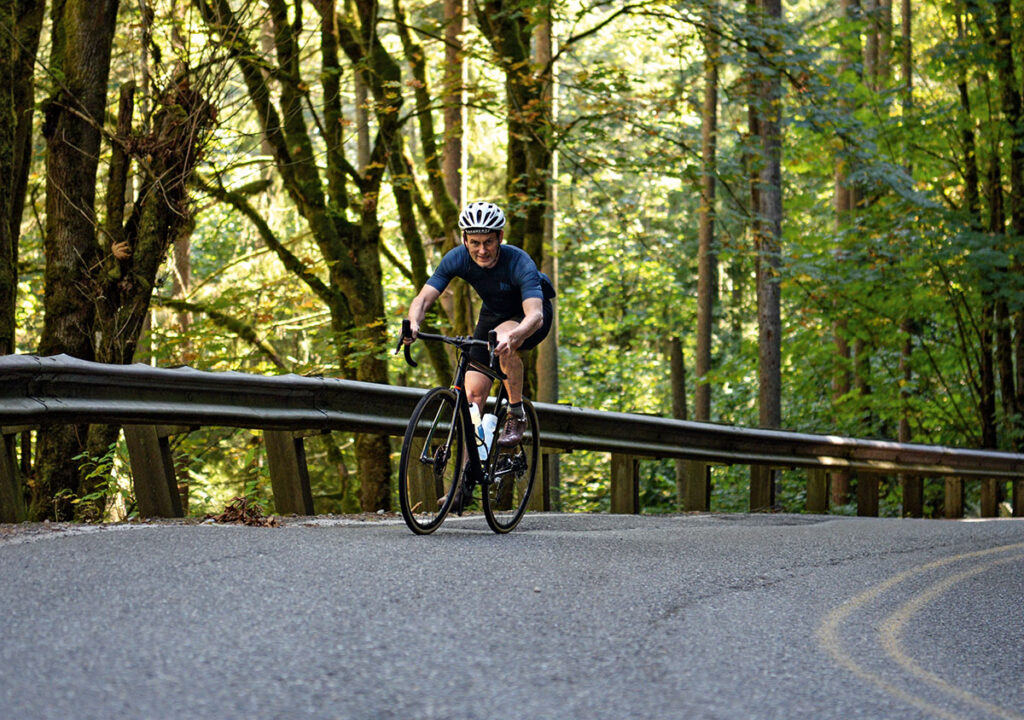
Planing
For at least a century, frame stiffness has been regarded as an essential component of a performance bike. Stiffer is better, that was the simple mantra. There were also a few tech nerds who pointed out that frame flex did not waste any significant energy, and hence frame stiffness didn’t matter one way or the other.
Imagine our surprise when we started testing bikes, and some bikes clearly were easier to pedal and faster. On other bikes, usually with ultra-stiff frames, it was hard to get in sync with the frame, and they felt sluggish as a result. It was Peter Weigle, the famous builder, who suggested that some bikes might be too stiff for us. That idea had been bubbling under the surface for years: Bill Davidson, the Seattle framebuilder, often talked about the “joyful performance” of ultralight (and thus flexible) steel frames.
Without a name, this idea wasn’t going anywhere, so we started to call it ‘planing,’ based on the analogy of a boat rising out of the water and going faster without requiring much more energy. In 2008, we designed a double-blind test that showed that ‘planing’ was real, and that it allowed riders to generate more power (rather than somehow being more efficient in transmitting that power). Further research showed that it’s not just flex, but flex in the right places, that makes a bike ‘plane.’
Years later, we found out that Japanese framebuilders have long tuned frame stiffness to the rider’s power output and pedaling style. In the West, mainstream bike makers still like to talk about their ‘stiff’ frames, yet they are also chasing light weight. It’s an open secret that less weight means less material, and that means less frame stiffness. And that’s one big reason why superlight frames often also ride and perform the best—especially for those of us that don’t have the power of a pro sprinter.
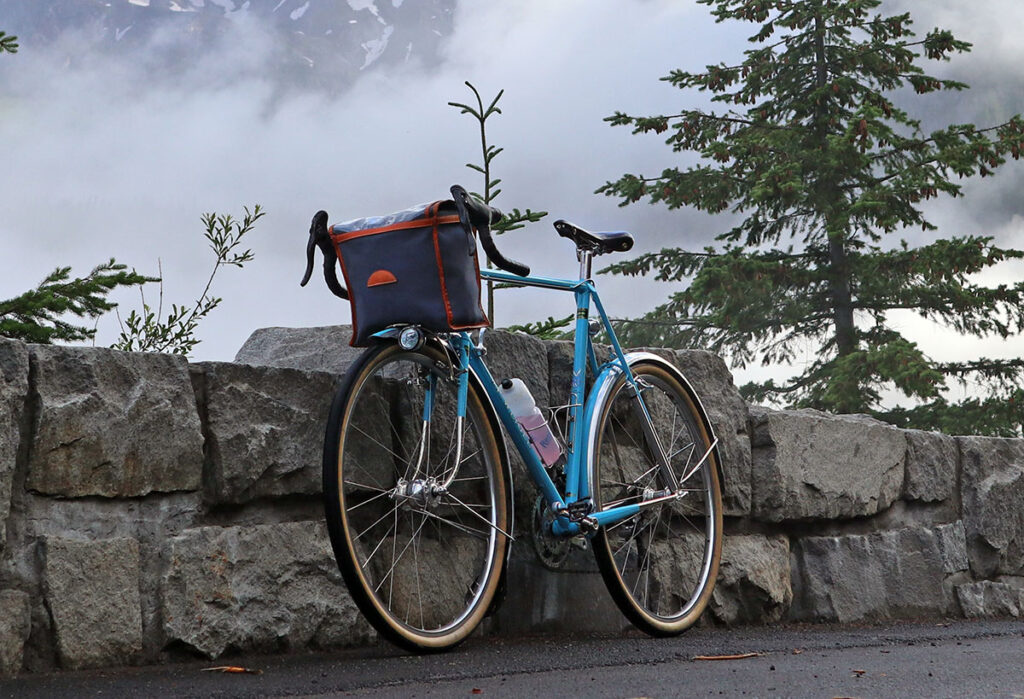
Constructeur, Decaleur and Rinko
As we started to explore unpaved passes in the Cascade Mountains, we were inspired by mid-century French randonneurs and their exploits on un-made roads in the Alps and Pyrenees. They had created bikes that were ideal for this type of riding. Riding 50-year-old Rene Herses and Alex Singers, we found that these bikes were superior to our brand-new custom bikes in many ways: lighter, more functional, more reliable—and more elegant.
There was a fundamental difference between these bikes and what we knew before: Our bikes had been built from bare frames, with lights, fenders, racks and bags added after the frame was complete. The mid-century bikes were designed as complete units. Small details actually make a big difference: Fenders attach directly—without clamps or brackets—to bridges that are placed exactly where they need to be. Racks are custom-made for each bike—eliminating sliders and other adjustments that add weight and flex. Lights are positioned perfectly to illuminate the road. Wires run inside racks and frames so they won’t get snagged and break accidentally.
We learned that there was a distinction between ‘cadreurs,’ who built only frames, and a ‘constructeurs,’ who made completely integrated bikes. We felt that the word ‘constructeur’ was useful to describe the bikes we wanted and needed for our adventures, so this term joined ‘derailleur’ and ‘peloton’ in the long list of French words that cyclists use every day. Another term we found useful was ‘decaleur,’ for a handlebar bag support that mounts the bag solidly, keeps it clear of the bars, and allows for easy removal when you park the bike. From Japan came ‘Rinko,’ for the ingenious system of packing a bike quickly into a small package, without a need for couplers.
These days, there are many constructeurs who make wonderful complete bikes. And decaleurs are available from a number of companies, including our own Rene Herse decaleurs in various models for different stems. Today there’s no need to dream of mid-century bikes—as cool and lovely as they are—because today’s bikes are better than ever.
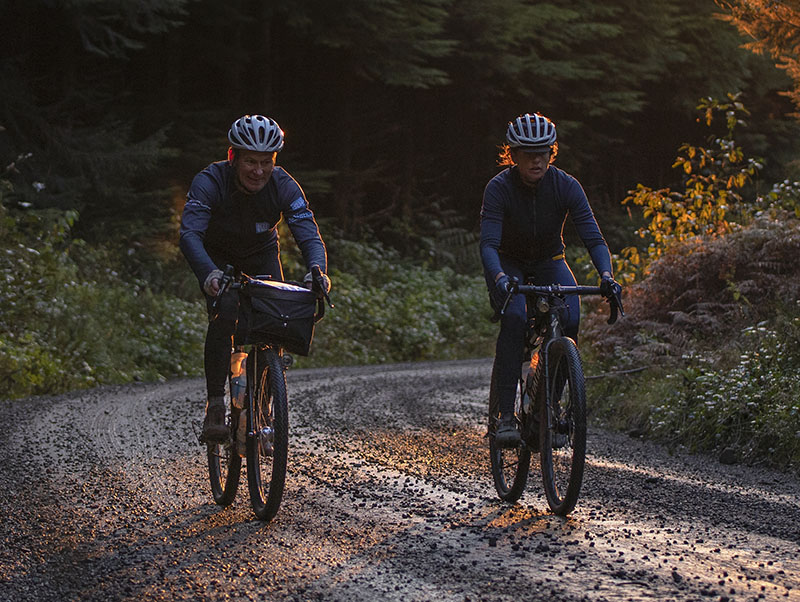
When we started 20 years ago, Bicycle Quarterly was definitely outside cycling’s mainstream. Ideas like riding road bikes on gravel—and the wide high-performance tires necessary for that type of riding—weren’t even on the radar yet. But the industry was watching, always on the lookout for new trends and new technology. In a 2009 Bicycle Times article, Marie Autrey called us “the most influential bike magazine you’ve never heard about.”
Our goal was never just to create new words, but to introduce new ideas. These days, all-road bikes, supple tires and fully integrated bikes from constructeurs are so commonplace that they don’t need much explanation. And that means riders enjoy bikes that can go more places and are more fun. At the same time—and not entirely unrelated—cycling is more open than ever to people with different backgrounds, different aspirations, different aesthetics, different bodies… That’s why the editorial for the 20th anniversary Bicycle Quarterly says: “Today’s cycling world is better than ever before.”
Further Reading:
- Subscribe to Bicycle Quarterly to read our 20th Anniversary Edition. On 116 pages, you’ll enjoy a review of 20 years of BQ, including our favorite adventures, plus articles that showcase the diversity of cycling today: Lael Wilcox reporting from Kenya; the Arkansas High Country bikepacking race; a group of young cyclotourists exploring Corsica on repurposed classic bikes; randonneuring in Germany… We’re planning another mailing of this special edition next week—subscribe today to get your copy.
- For a fun, yet comprehensive, discussion of the tech behind these words and ideas, check out our book The All-Road Bike Revolution.
Photo credits: Ryan Francesconi (Photo 2); Natsuko Hirose (Photo 4); Rugile Kaladyte (Photo 6)


